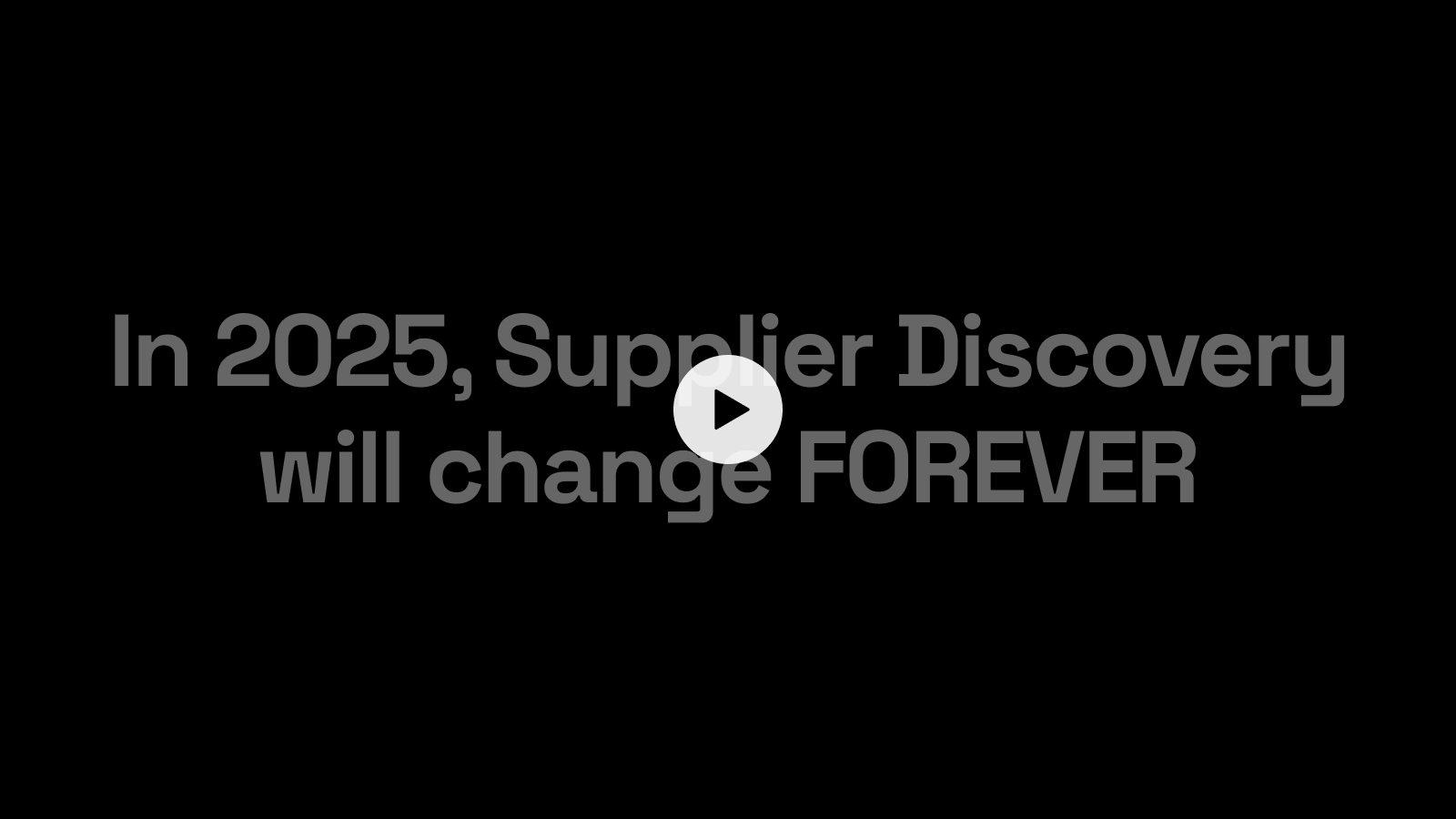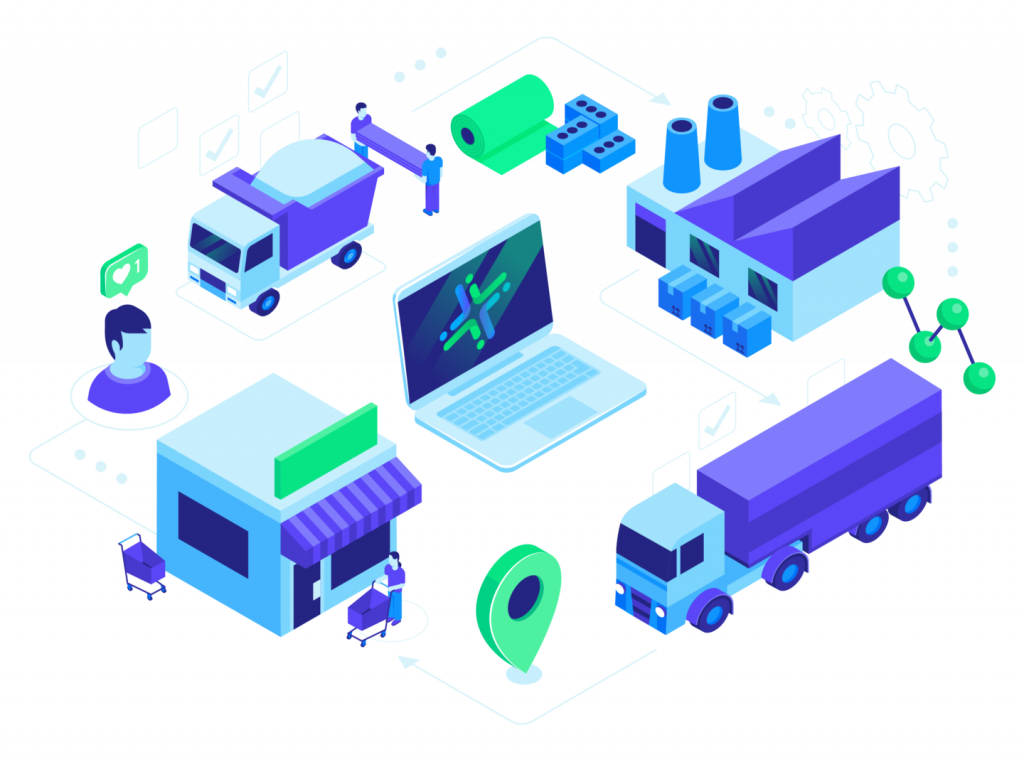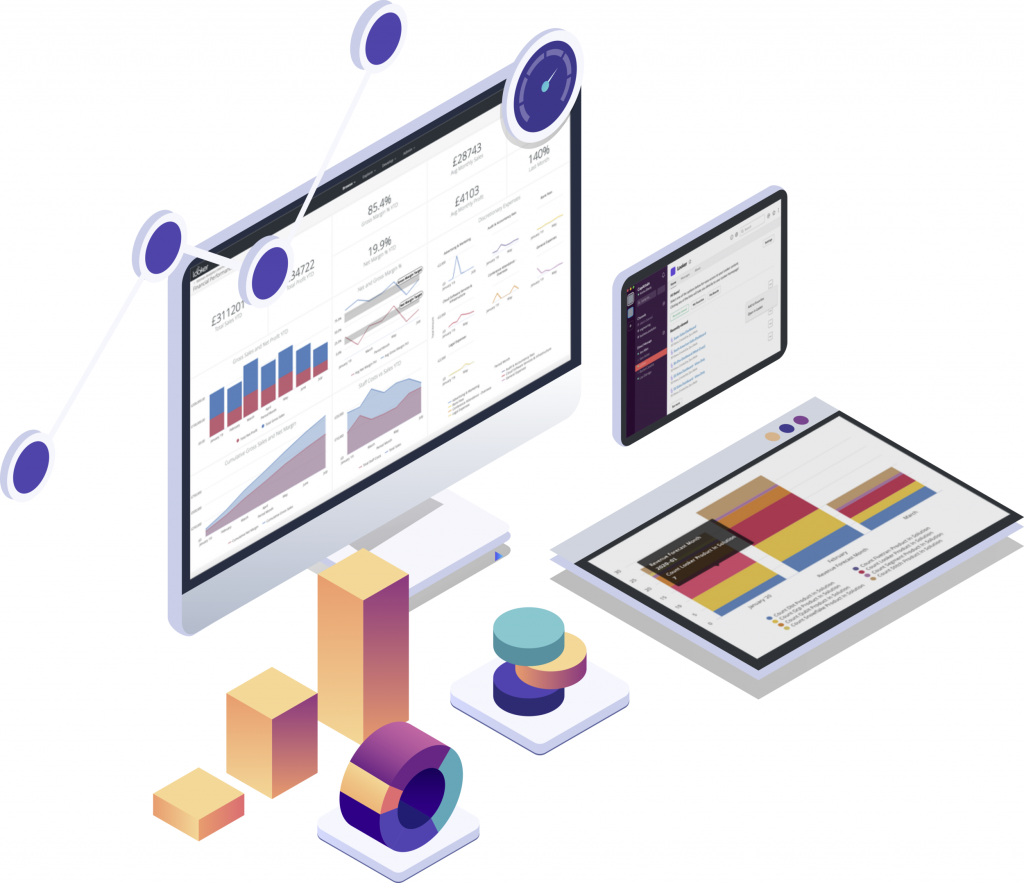Procurement: How New-Age Data Players Disrupt Supply Chain Discovery


Find suppliers across any category or industry with advanced filtering, real-time search capabilities, and weekly data updates.










We love our data, and now that you're here, you're one step closer to loving it too.
A wide sample of data, so you can explore what is possible with our data
Choose ->
built with procurement in mind. Focused on manufacturers, products and more
Choose ->
built with insurance in mind. Focused on classifications, business activity tags and more
Choose ->
built with sustainability in mind. Focused on sustainability commitments, and environmental and social governance insights.
Choose ->
built with strategic insights in mind. Focused on market trends, competitor analysis, and industry-specific data
Choose ->
A wide sample of data, so you can explore what is possible with our data
A wide sample of data, so you can explore what is possible with our data
built with procurement in mind. Focused on manufacturers, products and more
built with insurance in mind. Focused on classifications, business activity tags and more
A wide sample of data, so you can explore what is possible with our data
built with procurement in mind. Focused on manufacturers, products and more
built with insurance in mind. Focused on classifications, business activity tags and more
built with sustainability in mind. Focused on sustainability commitments, and environmental and social governance insights.
built with strategic insights in mind. Focused on market trends, competitor analysis, and industry-specific data

Keep up to date with our technology, what our clients are doing and get interesting monthly market insights.


One of the most significant challenges in the modern procurement sector is supply chain discovery. From increasing magnitude and scope of vendor risk, as well as inconsistent product availability to expanding regulatory frameworks, the complications in the whole process are endless.
In an attempt to be more competitive and efficient, many business models resort to off-shoring and outsourcing, becoming more interdependent in their efforts to bridge the supply chain network.
Unfortunately, the COVID-19 pandemic, which has been accompanied by the closure of borders and transportation restrictions, has led to a shift to on-shoring production, disturbing supply chain networks and procurement sectors all over the world, highlighting the sensitivity of the sector (source).
To ensure seamless procurement, you have to consider a plethora of factors like:
To summarize, information is power for procurement departments, and data analytics can be utilized to undertake optimal decisions rapidly in ever-changing markets and the overall economy.
According to experts at McKinsey & Company, robust data analytics uses algorithms that enable procurement managers to uncover unique insights from complex data sets. This aids them in their negotiations, more effective supplier segmentation, and performance management with a more optimized annual pricing strategy.

“In a world in which uncertainty and disruption will likely remain a constant, procurement leaders will need to be even more resourceful to help their organizations manage cash while limiting supply disruptions” (Deloitte 2020 CPO Flash Survey).
These procurement leaders can make the process more resourceful, streamlined, and efficient by integrating and overlaying AI-powered, automated procurement analytics solutions over the more traditional procurement activities.
According to a recent survey by Deloitte, most Chief Procurement Officers (CPOs) view data analytics as having the most impact on a business. What’s more, Ernest and Young identified data analytics as the most disruptive force in procurement over the next decade.
This can be logically attributed to the fact that evaluation of big data in depth offers unprecedented opportunities for advancing procurement value-adding, lowering costs, and avoiding fraud (source).
This is why many big data players dominate the field of procurement as the sector continues to draw a data analytics culture.
Returning back to supply chain management, the trade-off between efficiency and vulnerability in the supply chains plays a vital role in the sector’s decision-making.
Major events in the last few years have indicated that the supply chain is one of the most vulnerable industries. Any slight change in the world economy can have a sizable impact on supply chains worldwide.
There’s plenty of recent examples that forced us to learn this lesson the hard way.
Coronavirus troubles
The coronavirus outbreak has exposed the vulnerabilities of supply chain networks of many worldwide enterprises, especially those that were highly dependent on China to fulfil their procurement needs.
These developments were highly detrimental, resulting in a global supply shock. More than 200 Fortune Global 500 firms have a presence in Wuhan: the epicenter of the pandemic’s start (Deloitte).
A global demand shock immediately followed as many economies moved into recession due to plummeting incomes and expenditure. Two years into the pandemic, this supply chain turmoil continues to pose a big threat to the growth and sustenance of businesses.
However, recently, supply chain management’s greatest challenge has shifted from the pandemic to the Russia-Ukraine military conflict due to the resulting geopolitical and economic uncertainties it has created.
According to available analytics, due to the pandemic, the already dwindling global supply chains will be weakened even further, particularly for industries heavily reliant on Russian energy sources, as oil and gas prices surge (source).
With the ever-changing nature of the conflict and sanctions imposed on Russia, there is no likely end to the uncertainty clouding the horizon and, thus, no relief for global supply chain networks.

Procurement is a subset of supply chain management. It is clear that any vulnerabilities in the supply chain network will, directly and indirectly, impact the procurement sector.
Organizations need to consider the risk posed by third parties (vendors, suppliers, partners, contractors, or service providers) because disruptive events like the COVID-19 pandemic have impacted almost every business worldwide.
Thus, we see that as the scope of third-party risk management in the global economy increases, the following are the most demanding challenges the procurement sector has to endure in 2022:
A continuing trend towards globalization as trade barriers become less significant, accompanied by a growth of global trading blocs, i.e., the EU, a multitude of companies have taken advantage of outsourcing opportunities to cut down on their production costs and achieve greater efficiency.
This has also led to a shift in production to lower-income countries with lower sourcing costs, pushing their firms “into the game” without considering the long-term logistics costs or future ability to reshore.
In short, an increasing tendency towards outsourced services with an ever-increasing number of vendors results in a higher magnitude of vendor risk as organizations struggle to analyze essential information about their vendors.
This is likely to result in a supply chain disruption, incentivizing businesses to establish effective supply chain risk management. Therefore, organizations are now more focused on data management, i.e., spending analysis, to improve supplier relations.
Organizations with advanced data analytics are likely to identify problems and opportunities early on, minimizing the vendor risk as globalization takes root.
Building a solid supply chain network has been a critical priority for many organizations throughout the years.
Due to the high uncertainty of geographical demand distribution and unbalanced on-hand inventory at major distribution centers around the world, inconsistent product availability not only disturbs supply chains and procurement needs, but the company performance also dwindles, and the brand reputation suffers as the consumers likely end up switching to substitutes.
To minimize the risks resulting from these disruptions and ensure consistent product availability in the market, organizations need to monitor and identify supplier risks. This is critical to maintaining an optimal market position and reputation while achieving the company’s financial objectives.
Once again, advanced data analytics come into play in identifying these supplier risks, enabling firms to uncover hidden patterns from data sets with an opportunity for an adequate response to the disruptions identified.
Today’s consumers and regulatory bodies place great importance on ethical, safe, and sustainable business practices; therefore, companies must be aware of labor and environmental practices that their customers and regulatory bodies do not favorably view.
For example, the 2023 German Supply Chain Act will require organizations to fully understand the business practices of their supply chain partners, especially regarding sustainable practices. Although this manner of corporate social responsibility may ensure greater customer loyalty and stronger supplier relations, it adds to higher short-run procurement costs and makes the firms less competitive.
Once again, there is a need for new data sources and modern analytics to ensure that these expanding requirements are met with minimum friction and are financially viable for the organizations.

Since most organizations rely on third parties to ensure smooth procurement and supply chain management, effective third-party risk management is a necessity for successful business models.
Therefore, in order to minimize the risk associated with global instability and third parties, organizations acquire external data for supply chain discovery, and procurement teams heavily rely on this third-party data to locate suppliers.
Today numerous data companies help mitigate the risks by providing real-time data feeds of global news and events. With an early warning of disruptions from these sources, organizations are able to take action before the problem bogs down business operations.
With digital tools like Thomasnet and Soleadify, procurement leaders are easily able to locate alternative supply sources. What usually takes months, firms are now able to cast a wider digital net to identify all unusual patterns in the markets, reducing supply chain risks and disruptive effects.
Supply chain discovery provides the basis for the next generation of supply chain management. Currently, it is maintained through research methodologies confined to market and in-depth supplier analysis and identifying key market indicators to formulate an optimized business strategy.
One of the best SCM strategies is strategic sourcing: supply channels are developed with the lowest total costs ensuring that purchasing strategy is aligned with the business goals. Strategic sourcing comprises of:
● Data collection and Spend analysis
● Supplier discovery and RFx
● Negotiations and contracting
● Implementation and optimization
Strategic sourcing not only results in lower costs and increased business productivity, but a comprehensive understanding of supplier markets also facilitates businesses in mitigating their risks early on. In the long run, strategic sourcing also results in stronger relations between firms and suppliers, stabilizing the supply chains.
Although the process might be similar to procurement, Strategic sourcing is best understood as a subset of procurement. In addition to sourcing and purchasing, the latter involves supplier/contract management and data analytics.
Companies may also use supplier aggregators; these aggregator third-parties collect data from multiple different sources and broker that data.
For aggregators like Thomasnet, B2B suppliers pay to be listed on directories of industrial product information and manufacturers. These listings layout firms’ complete information: their size, annual sales, product information, certifications, and so on, making it easier for organizations to locate new suppliers and potential buyers. So, are supplier aggregators like Thomasnet worth it?

● Locate a plethora of suppliers and compare them to find the most suitable for your firm.
● High-quality suppliers: you can find suppliers with specific certifications/registrations.
● Efficiency: businesses are able to locate suppliers at the best possible prices without getting ripped off.
● Information gap: in many cases the information uploaded on listings is published one time and rarely updated by first parties.
● There’s a long tail of inactive suppliers on the platform.
● High cost with low returns: aggregators like Thomasnet procure an increased investment; however, their reporting may not be as robust with loose metrics.
● Not every potential buyer/supplier makes use of aggregators. If firms invest in only an aggregator-based strategy, they miss out on potential sales through other channels.
Therefore, based on strategic sourcing principles, Aggregators like Thomasnet are not a reliable source for SCM due to limited supplier availability.
Data players like Soleadify and Scoutbee make up the alternative data stream channels to bridge this gap. Driven by the complexities of AI, these channels provide businesses with data enrichment, unprecedented coverage of SMBs, accurate classification, and in-depth insights based on real-time updates.
Startups like Soleadify utilize advanced machine learning models which analyze billions of web pages every month, presenting organizations with up-to-date data and profiles for millions of suppliers, revolutionizing the procurement sector.
Through Soleadify’s database, you can access data for over 2M Manufacturers and 5M Wholesalers based on general data points like:
● Company name: it finds several names associated with a company, making the dataset ideal for matching.
● Company classification: classifies companies based on what they actually do and how they describe themselves, resulting in a more accurate grouping.
● Key employees: comprehensive employee portfolio; richer source than Linkedin.
● Products: identifies the company’s products regardless of where they are listed.
● Contact Data: General emails and phone numbers, as well as the contact data of the business owner or relevant decision-maker, whenever the information is provided publicly, in compliance with international privacy laws.
Soleadify can also track the vast majority of products these companies sell – well over 100M products, with an average refresh rate of 2 weeks, so the product information is constantly up-to-date. It also adds a layer of ESG data so the sourcing process can be done based on sustainability policies and factors, creating more comprehensible supplier profiles.
To summarize, Soleadify’s data collection capabilities with extensive filters and comprehensive website prospecting are unparalleled.

Supply chain management and procurement are a very volatile sector, easily destabilized as a result of globular uncertainties. With the increasing magnitude and scope of risks, business models need to initiate effective third-party risk management as a part of their SCM strategy. External data sources and advanced data analytics play a pivotal role in ensuring minimum-risk procurement with assured alternative measures.
Although procurement platforms like Thomasnet may still make the process marginally streamlined, on average, big data players like Soleadify find 20x the number of results compared to Thomasnet for the same search query with more robust data analytics. The more rational choice between the two platforms is rather evident.
Want to find out more about Soleadify’s capabilities in supplier discovery?
Check out this case study from one of the top US-based management consulting firms.